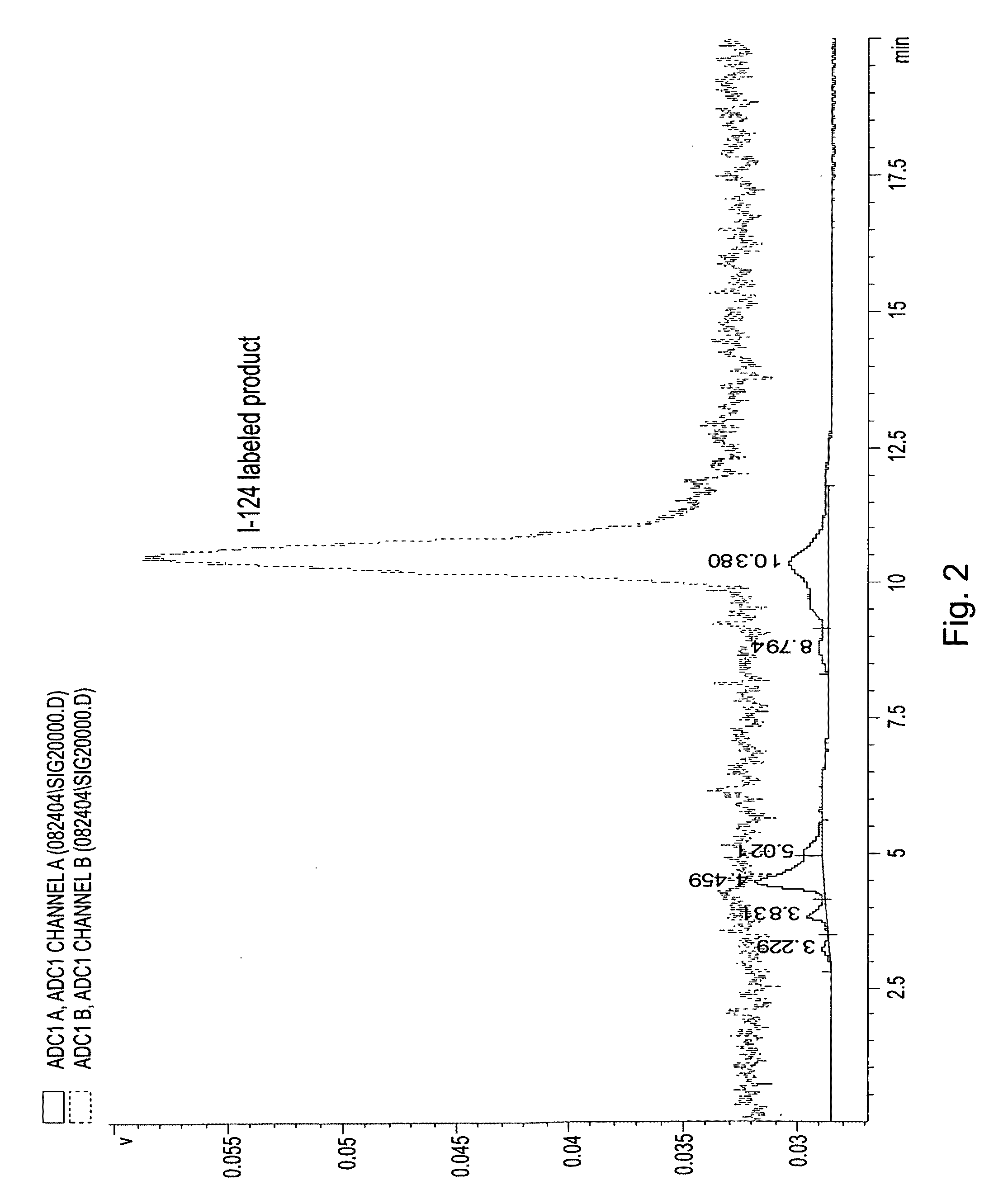Porphyrin-based compounds for tumor imaging and photodynamic therapy
- Summary
- Abstract
- Description
- Claims
- Application Information
AI Technical Summary
Benefits of technology
Problems solved by technology
Method used
Image
Examples
Embodiment Construction
[0032]On the basis of a study of a series of alkyl ether analogs of pyropheophorbide-a, we developed a relatively long wavelength absorbing photosensitizer, the 3-(1-hexyloxy)ethyl-derivative of pyropheophorbide-a 1 (HPPH). This compound is tumor-avid and currently in Phase I / II human clinical trials at the Roswell Park Cancer Institute. We investigated the utility of this compound as a “vehicle” by conjugation with mono- or di-bisaminoethanethiols (N2S2 ligand). The results obtained from in vivo biodistribution experiments indicated that the tumor / non-tumor uptake ratio of the drug depends on the time and tumor size. With time, the clearance of the HPPH-based compounds from tumor was found to be slower than from most of the non-tumor tissues. However, the short 6 h half-life of 99mTc was found to be incompatible with 24-hour imaging time, suggesting that the use of a longer-lived isotope could provide a useful scanning agent. Another approach for developing an improved tumor-imagin...
PUM
 Login to View More
Login to View More Abstract
Description
Claims
Application Information
 Login to View More
Login to View More - R&D
- Intellectual Property
- Life Sciences
- Materials
- Tech Scout
- Unparalleled Data Quality
- Higher Quality Content
- 60% Fewer Hallucinations
Browse by: Latest US Patents, China's latest patents, Technical Efficacy Thesaurus, Application Domain, Technology Topic, Popular Technical Reports.
© 2025 PatSnap. All rights reserved.Legal|Privacy policy|Modern Slavery Act Transparency Statement|Sitemap|About US| Contact US: help@patsnap.com



